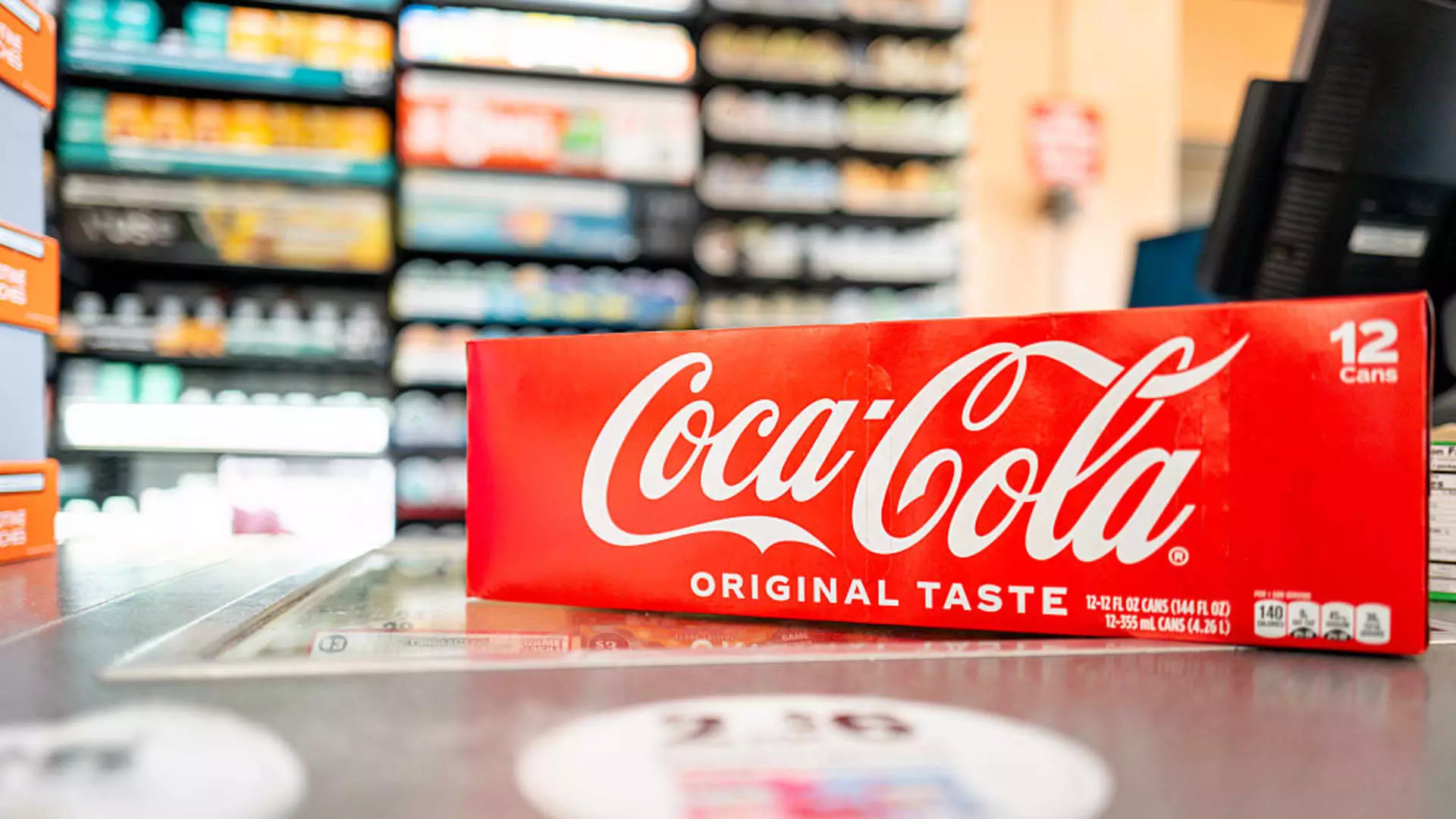Coca-Cola’s latest financial report offers a misleadingly optimistic narrative—one that glosses over underlying vulnerabilities. The company beat analysts’ expectations on earnings and revenue, yet a deeper analysis reveals that this seemingly strong performance is not as resilient as it appears. The modest stock price decline in premarket trading, less than 1%, suggests investor skepticism. While Coke’s adjusted earnings per share of 87 cents and revenue of $12.62 billion surpass projections, these figures fail to conceal the unsteady foundation upon which the corporation currently rests. Such short-term beats are often misleading, masking profound structural challenges that threaten long-term stability.
Volume Decline and Shifting Consumer Dynamics
A critical aspect often overlooked is the decline in global unit case volume—a 1% decrease over the quarter, with most regions experiencing reduced demand. Despite the revenue uptick, actual consumer behavior presents a bleaker picture. In core markets such as North America, demand for traditional sodas is waning, driven by changing health trends, regulatory pressures, and shifting preferences. Notably, volume in the U.S. fell by 1%, despite some improvement over the previous quarter. The resilience of overall consumer spending does not necessarily translate to loyalty for Coke’s flagship products, which face stiff competition from healthier alternatives.
Furthermore, the decline is uneven: while EMEA saw a 3% increase, Latin America and Asia-Pacific experienced drops of 2% and 3%, respectively. This patchy performance underscores the vulnerability of Coke’s global strategy, which relies on regional stability—an assumption that is increasingly tenuous. The recent social media controversy involving Hispanic consumers further illuminates how external shocks, even unrelated to product quality, can impact sales and brand perception.
Market Challenges and Strategic Responses
Coke’s management attributes some of the volume downturns to macroeconomic uncertainty and geopolitical tensions. These external factors are not just transient headwinds but indicators of a more embedded fragility within the market environment. The company’s efforts to stimulate demand through marketing and strategic pricing are commendable, yet they are increasingly insufficient in reversing structural decline. The plan to introduce a cane sugar version of its iconic cola in the U.S. this fall is a perceptive move—yet it is a reactionary tactic that might only serve to temporarily boost sales rather than address the core issue: consumers’ shift away from traditional sugary sodas.
Additionally, the company’s forecast to grow organic revenue by 5–6% in 2025 should be met with skepticism. Such projections often hinge on inflated assumptions, optimistic market conditions, and strategic initiatives that may not pan out as expected. The narrowing of earnings outlook to a 3% growth rate signifies acknowledgment of these challenges, yet also reflects a lack of boldness in addressing fundamental demand shifts.
Is Coca-Cola Overestimating Its Capacity for Recovery?
While Coke’s executives claim that plans are “working,” this narrative conveniently ignores the broader trend of declining soda consumption globally. The beverage giant appears to be caught between its traditional product offerings and a rapidly evolving market that favors health-conscious choices. The effort to maintain growth through pricing strategies and new product variants is insufficient for a company of Coke’s size and influence. Its attempt to offset demand contraction with product diversification—water, coffee, dairy—is a tacit admission of decline rather than a visionary expansion.
Moreover, the company’s focus on specific markets, like Europe and North America, indicates a strategic pivot to regions where volume declines have been mitigated but not eliminated. This selective optimism is dangerous; it risks underestimating the depth of changing consumer behavior and regulatory pressures that threaten the core of Coke’s legacy product portfolio. Overall, choosing to focus on short-term results and market share gains while avoiding structural reforms could backfire when consumer preferences shift further away from sugary drinks and towards healthier options.
Final Reflection: An Industry in Transition or a Company in Denial?
Coca-Cola’s recent earnings highlight a pattern familiar to many legacy brands: superficial financial success masking long-term decline. The company’s ability to beat expectations does not negate the core issues threatening its future. It is increasingly evident that Coke’s traditional business model—relying on volume growth and geographic expansion—is becoming obsolete in a world that prizes health, authenticity, and conscious consumption. While the company trumpets its strategic initiatives and regional successes, the truth remains: Coca-Cola is navigating a landscape fraught with fundamental shifts, and its current approach risks only prolonging what may soon be an unavoidable decline unless it fundamentally reimagines its offerings and business strategy.

